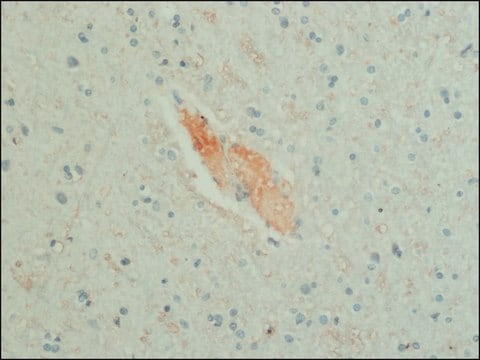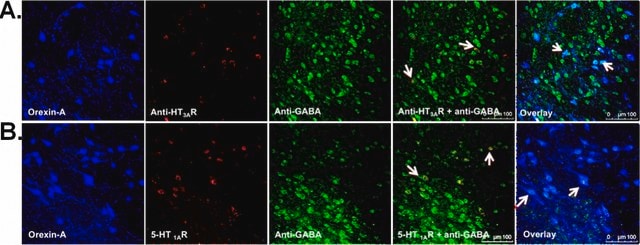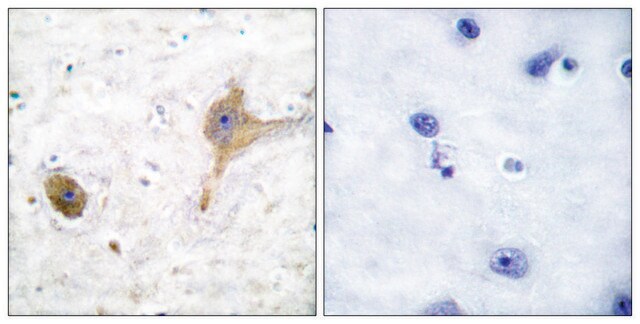A2052
Anti-GABA antibody produced in rabbit
affinity isolated antibody, buffered aqueous solution
Synonim(y):
Anti Gaba, Anti Gaba Antibody, Anti-Gaba, GABA Antibody - Anti-GABA antibody produced in rabbit, Gaba Antibody, Anti-γ-Aminobutyric acid
About This Item
Polecane produkty
pochodzenie biologiczne
rabbit
Poziom jakości
białko sprzężone
unconjugated
forma przeciwciała
affinity isolated antibody
rodzaj przeciwciała
primary antibodies
klon
polyclonal
Postać
buffered aqueous solution
reaktywność gatunkowa
rat, Drosophila, wide range
opakowanie
antibody small pack of 25 μL
metody
dot blot: 1:10,000
immunohistochemistry (formalin-fixed, paraffin-embedded sections): 2.5 μg/mL using rat cerebellum
Warunki transportu
dry ice
temp. przechowywania
−20°C
docelowa modyfikacja potranslacyjna
unmodified
informacje o genach
rat ... Gabra1(29705)
Opis ogólny
GABA (γ-aminobutyric acid) is a multifunctional molecule found in several organisms, from prokaryotes to vertebrates. It is present in non-nervous structures, such as peripheral nervous and endocrine systems. GABA is formed following decarboxylation of glutamic acid by the enzyme glutamic acid decarboxylase (GAD).
Immunogen
Zastosowanie
Działania biochem./fizjol.
Postać fizyczna
Przechowywanie i stabilność
Oświadczenie o zrzeczeniu się odpowiedzialności
Not finding the right product?
Try our Narzędzie selektora produktów.
Kod klasy składowania
10 - Combustible liquids
Klasa zagrożenia wodnego (WGK)
nwg
Temperatura zapłonu (°F)
Not applicable
Temperatura zapłonu (°C)
Not applicable
Certyfikaty analizy (CoA)
Poszukaj Certyfikaty analizy (CoA), wpisując numer partii/serii produktów. Numery serii i partii można znaleźć na etykiecie produktu po słowach „seria” lub „partia”.
Masz już ten produkt?
Dokumenty związane z niedawno zakupionymi produktami zostały zamieszczone w Bibliotece dokumentów.
Klienci oglądali również te produkty
Nasz zespół naukowców ma doświadczenie we wszystkich obszarach badań, w tym w naukach przyrodniczych, materiałoznawstwie, syntezie chemicznej, chromatografii, analityce i wielu innych dziedzinach.
Skontaktuj się z zespołem ds. pomocy technicznej













